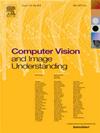Graph-based Dense Event Grounding with relative positional encoding
IF 4.3
3区 计算机科学
Q2 COMPUTER SCIENCE, ARTIFICIAL INTELLIGENCE
引用次数: 0
Abstract
Temporal Sentence Grounding (TSG) in videos aims to localize a temporal moment from an untrimmed video that is relevant to a given query sentence. Most existing methods focus on addressing the problem of single sentence grounding. Recently, researchers proposed a new Dense Event Grounding (DEG) problem by extending the single event localization to a multi-event localization, where the temporal moments of multiple events described by multiple sentences are retrieved. In this paper, we introduce an effective proposal-based approach to solve the DEG problem. A Relative Sentence Interaction (RSI) module using graph neural network is proposed to model the event relationship by introducing a temporal relative positional encoding to learn the relative temporal order information between sentences in a dense multi-sentence query. In addition, we design an Event-contextualized Cross-modal Interaction (ECI) module to tackle the lack of global information from other related events when fusing visual and sentence features. Finally, we construct an Event Graph (EG) with intra-event edges and inter-event edges to model the relationship between proposals in the same event and proposals in different events to further refine their representations for final localizations. Extensive experiments on ActivityNet-Captions and TACoS datasets show the effectiveness of our solution.
基于相对位置编码的基于图的密集事件接地
视频中的时间句基础(TSG)旨在从未修剪的视频中定位与给定查询句相关的时间时刻。大多数现有的方法都集中在解决单句接地问题上。最近,研究者提出了一种新的密集事件基础(DEG)问题,将单事件定位扩展到多事件定位,其中检索由多个句子描述的多个事件的时间矩。在本文中,我们引入了一种有效的基于提议的方法来解决DEG问题。提出了一个基于图神经网络的相对句子交互模块,通过引入时间相对位置编码来学习密集多句查询中句子之间的相对时间顺序信息,从而对事件关系进行建模。此外,我们设计了一个事件上下文化跨模态交互(ECI)模块,以解决在融合视觉和句子特征时缺乏来自其他相关事件的全局信息的问题。最后,我们构建了一个具有事件内边和事件间边的事件图(Event Graph, EG),对同一事件中的提案和不同事件中的提案之间的关系进行建模,以进一步细化它们的表示,以便最终定位。在ActivityNet-Captions和TACoS数据集上的大量实验表明了我们的解决方案的有效性。
本文章由计算机程序翻译,如有差异,请以英文原文为准。
求助全文
约1分钟内获得全文
求助全文
来源期刊

Computer Vision and Image Understanding
工程技术-工程:电子与电气
CiteScore
7.80
自引率
4.40%
发文量
112
审稿时长
79 days
期刊介绍:
The central focus of this journal is the computer analysis of pictorial information. Computer Vision and Image Understanding publishes papers covering all aspects of image analysis from the low-level, iconic processes of early vision to the high-level, symbolic processes of recognition and interpretation. A wide range of topics in the image understanding area is covered, including papers offering insights that differ from predominant views.
Research Areas Include:
• Theory
• Early vision
• Data structures and representations
• Shape
• Range
• Motion
• Matching and recognition
• Architecture and languages
• Vision systems
 求助内容:
求助内容: 应助结果提醒方式:
应助结果提醒方式:


